Gustaf Sobin (1935-2005)
from Girandole
it’s how the
scarf falls, and
thesoft
braided silver
of the shoes… their signs!
that sky! the
newun-
declined night!
whisperchases whisper, edge
its edges,
asan arm swims
toward the
cast
brass palmleaves
of the light.*
break, but
where; shatter, a
wave, still
swelling, against what? ………
………………………………………….….no
heaven, and
scarce-ly an
earth, a-
wash in that last echo: a
mouth, as ittwists
to the fold of a shoulder.
*
In my poem Canto Diurno # 1, (1986), I speak to Gustaf’s work:
noon
re Sobin’s work:
two ways of working, essentially: first the vertical / spine poem that turns/twists on grammatik,
cf: ‘compose. (no ideas
but in…)’
grammatik
(this vertical tropos is not be confused with the ‘organic’ – romantic image of poem as tree, of art/work as natural growth, tree with bole/trunk, roots & branches, or with man as tree confusion, the renaissance romance, Leonardo’s tree-man inscribed upright in the cosmos, that cosmic anthropocentrism out of which (even if seemingly as reaction against) came romanticism, all the way down to us — for us still there in Duncan, though he already on the edge of a new configuration, twin to the explosante-fixe, already close to what this new figure might be, is, in, say Celan, Sobin, some others’, my own work: a necessary denial of tree image, a first approximation of the rhizome.)
&, secondly, a horizontal/horizonal single line sprezzatura (even when it takes two, or three, or, rarely, four or five lines, it always works on the one/single, line. These, nearly always truncated, fore-shortened, literally, as if the eye (the writer’s?, the reader’s?) cld only catch that tail-end, or started out too fast, flew over, too eager at the beginning, the beginning therefore, the origin therefore always hidden/in hiding, the breath that is inhaled, invisible air that goes in to come out again of the body, colored, thus visible, inky glyphs shaped by lips & teeth & tongue — but something always already caught / now catches / in the throat.
Catches, caches. a scroll, a banner of words / no banter here/ no more air about to breezily agitate the sentences. It is as if all the air there was, was needed in the breath-making of the line and now those foreshortened lines rest exhausted, after a long journey, a trajectory described, come to rest in the playing field of gravity (of words, of language – the invisible ether/origin maybe the ideas as forerunners ((but what does come first : thought or language? the aim of poetry clearly the attempt to put that question out of play by creating the concordance of the two: the shadow and the thing, the thought and the word)) gravity, I said, then there is play again, ça en découle, gravitas, gravide, grave/grave — bringing it all back down to earth.
*
The horizontal and vertical forms interpenetrate in the architectonics of the book, creating for the reader the design of a cross, a cross firmly planted in the grass and ground of southern France.
but that cross formed, that many-armed figure is not meant for the man who wrote the poems: it is not even meant as the man’s shadow: it is the man.
his shadow the high summer scarecrows speckle the Vaucluse.
or maybe his shadow is only the shadow of those scarescrows.
he said them. unsaid them all.
crows are birds of omen. so are scares. so are the scars we call words.
*
Strange how I hear Blanchot in so many of the horizonals:
“towards that ear, that ether, that absentia of all presence: presence itself.”
*
& this, which Duncan immediately worried out of the ‘ars poetica’:
“but death continuously discharged, expelled,
protected…
a death kept alive.”
i.e.: our life alived
in the tension
of the worded
line
*
ex-vita, he writes, I hear the rime: ex-voto, & look up
votive: 1. given or dedicated in fulfillment of a vow or pledge: a votive offering
2. expressing a wish, desire or vow. A votive prayer.
ex-voto: (according to a vow) a votive offering
*
that many-armed cross also a loom, the woof & weft of the cloth woven thereon.
and in woven there is the vow makes the poem a votive offering.
which is not the violent/bloody sacrifice of devotion where everything goes up in fire and smoke. no sparagmos here, what happens here happens as air, as breath that a-lives, and thus “the earth as air”, even.
*
… and come now, a few pages further into the text, to the word ‘votive’ I had earlier teased out of ex-vita:
as votive: for
the
vow
of the rose.

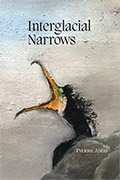 “Interglacial Narrows (Poems 1915-2021)” Contra Mundum Press
“Interglacial Narrows (Poems 1915-2021)” Contra Mundum Press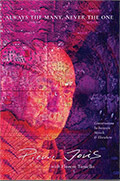 “Always the Many, Never the One: Conversations In-between, with Florent Toniello” Contra Mundum Press
“Always the Many, Never the One: Conversations In-between, with Florent Toniello” Contra Mundum Press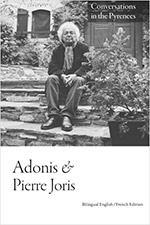 “Conversations in the Pyrenees”
“Conversations in the Pyrenees”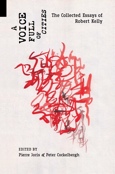 “A Voice Full of Cities: The Collected Essays of Robert Kelly.” Edited by Pierre Joris & Peter Cockelbergh
“A Voice Full of Cities: The Collected Essays of Robert Kelly.” Edited by Pierre Joris & Peter Cockelbergh “An American Suite” (Poems) —Inpatient Press
“An American Suite” (Poems) —Inpatient Press “Arabia (not so) Deserta” : Essays on Maghrebi & Mashreqi Writing & Culture
“Arabia (not so) Deserta” : Essays on Maghrebi & Mashreqi Writing & Culture “Barzakh” (Poems 2000-2012)
“Barzakh” (Poems 2000-2012) “Fox-trails, -tales & -trots”
“Fox-trails, -tales & -trots”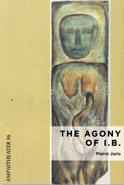 “The Agony of I.B.” — A play. Editions PHI & TNL 2016
“The Agony of I.B.” — A play. Editions PHI & TNL 2016 “The Book of U / Le livre des cormorans”
“The Book of U / Le livre des cormorans”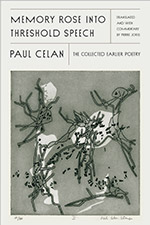 “Memory Rose Into Threshold Speech: The Collected Earlier Poetry of Paul Celan”
“Memory Rose Into Threshold Speech: The Collected Earlier Poetry of Paul Celan”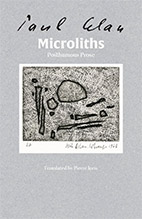 “Paul Celan, Microliths They Are, Little Stones”
“Paul Celan, Microliths They Are, Little Stones”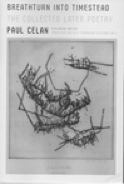 “Paul Celan: Breathturn into Timestead-The Collected Later Poetry.” Translated & with commentary by Pierre Joris. Farrar, Straus & Giroux
“Paul Celan: Breathturn into Timestead-The Collected Later Poetry.” Translated & with commentary by Pierre Joris. Farrar, Straus & Giroux